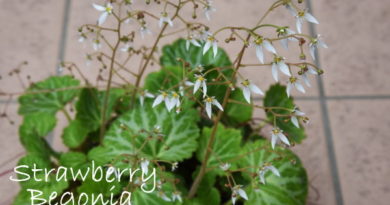Why Houseplants Get Leggy and How to Fix It
Even if you haven’t heard the term ‘leggy’ before, you’ve probably seen it in your houseplants. Luckily, there is no need to panic. This is one of the most common issues affecting houseplants and one of the easiest to fix.
‘Leggy’ growth is another term for stretched stems with only a few leaves at the ends. The leaves along the stems will usually be small and diminished compared to the early growth. You’ll often notice leggy growth appearing when you first bring a new plant home, move it to a new spot, or as the seasons change from summer to winter.
There are four simple steps to fixing leggy houseplants for good, keeping your plants lush and compact year-round. But before we look at the fixes, it’s important to understand why this happens in the first place to ensure we can prevent the problem in the future.
Why Houseplants Get Leggy

The main cause of leggy houseplants is lack of sunlight.
As we all know, houseplants need sunlight for photosynthesis, giving them the resources required to produce their own ‘food’ or energy. The amount of sunlight they need will depend on conditions in their native habitats and their tolerance of differences in light levels.
This need for sunlight is so strong that leaves will seek it out when they don’t have enough. If you place your houseplants in an area with little to no sunlight, the stems will stretch toward the nearest light source. This survival mechanism leads to the thin stems and small leaves we recognize as leggy growth.
In the early stages, you may assume your houseplant is growing. But it is struggling if the stems slowly become longer and thinner over time, making the plant look spindly. You’ll also notice a lack of new leaf growth or very small leaves that make the plant look sparse.
Although sunlight is the primary cause of leggy growth, it is not the only one.
Lack of pruning (particularly for vining plants in hanging baskets) can cause the stems on the ends to become leggy as the roots struggle to support the entire plant. Overfertilizing with a fertilizer high in nitrogen can also result in rapid stem and leaf growth that looks leggy. However, these issues are quite rare and not as common as lack of sunlight.
How To Fix Leggy Houseplants
Once you’ve identified leggy growth, fixing the problem immediately is best. The sooner you improve conditions, the sooner the plant can recover and push out new, healthy growth.
Luckily, leggy houseplants caused by lack of sunlight can be fixed in four simple steps. The plants may take a couple of weeks to bounce back, but they will eventually look as lush as the day you bought them.
Understand Light Inside Your Home

Step one in the process is understanding the lighting levels inside your home. You’ve probably seen descriptions of lighting requirements online, from direct sun to low light. But what do these actually mean in practice?
Bright indirect light is the gold standard for most tropical houseplants. This is equal to dappled sunlight or partial shade outdoors. Bright indirect light is normally found in front of large and bright windows (often east or south-facing) but out of the path of direct sunlight.
Moderate or medium light levels are also found in bright rooms but placed slightly further away from the windows or slightly obscured by furniture or other objects.
Low light is usually found far away from windows in bright rooms or in front of north-facing windows that receive little sun throughout the day. It does not equal ‘no light’ – in other words, rooms with no windows. Some plants can survive in low light, but most prefer higher levels of indirect sunlight.
If you’re not quite sure, you can use a light meter (or your cellphone, although the tests are not the most accurate) to check how much light your plants are receiving. These are general ranges for each descriptor, measured in Lux:
- Low light: 250 – 1000 Lux
- Medium light: 1000 – 2000 Lux
- Bright indirect: 2000 – 5000 Lux
- Direct: 10000+ Lux
Determine The Right Amount Of Light For Your Houseplant

Now that you know the light layout in your home, you need to decide which spot is preferred for your specific houseplants.
Although lack of sunlight is the cause of leggy growth, thrusting the plant into direct sun immediately will only do more harm than good. Choose a spot that’s right for your houseplants – not too little and not too much.
Most houseplants prefer bright, indirect light. If you’ve placed your houseplant in low light, moving it closer to a bright window but out of the path of direct sun will usually resolve the problem. Some may be happier in medium to low light (usually those that grow in deep shade outdoors).
Other plants may be leggy because they are accustomed to direct sunlight in their native habitats. This is often the case for desert succulents that quickly stretch and lose their shape away from direct sunlight indoors. They must be moved to a sunny south-facing window where they can bask in as much light as possible.
Do some research to determine where your houseplant will fit best to avoid exacerbating the problem later on.
Prune Leggy Growth

Before you move the plant, you need to deal with the growth that has become leggy in the first place. Moving the plant to a better spot won’t fix the already stretched growth, so it’s best to cut these areas back.
First, grab a sharp pair of pruning shears. Clean and disinfect them beforehand, especially if you’ve used the same shears recently on diseased plants. The sharper your shears, the cleaner the cut you’ll make, allowing the stems to heal much quicker.
Trim each of the leggy stems back to full and healthy growth. Cut off as much of the diminished growth as possible without removing more than one-third of the plant at one time. Over-pruning can also lead to shock that will stunt growth and impact recovery.
Cut just above a node (the bumps in the stems where the leaves grow from) to stimulate new growth at that point. The new stems will be much healthier with improved lighting conditions, with more leaves and branches to give the plant a fuller look.
You can compost your cuttings or root them in water to experiment with propagation. But remember that leggy stems are stressed and not at their peak, so don’t be disappointed if you don’t notice any root growth.
Move The Pot

The final step is essential – moving the pot to a brighter area. After pruning, this will ensure that any emerging new growth doesn’t become as leggy as before. Choose a spot based on your analysis of your home’s lighting conditions and what the plant needs.
If the change in lighting conditions is quite drastic, it’s best to make changes slowly. For example, if you have a leggy succulent that has been in low light for a while, suddenly moving it to intense direct sunlight can cause the leaves to burn as they are not used to bright sunlight.
For any dramatic changes, slowly introduce the plant to its new home for an hour per day, increasing the time over a week or two to avoid scorching. If you’re only making small adjustments (like going from medium to bright indirect light, for example), don’t worry about acclimatizing first, as there is little risk of burning.
Monitor the plant over the next few weeks for signs of scorching. Also, keep up with watering to promote new growth.
Final Thoughts
After following these steps, your houseplants should look as lush and healthy as the day you bought them. Keep lighting conditions in mind for future houseplant purchases to avoid leggy growth from the start.




